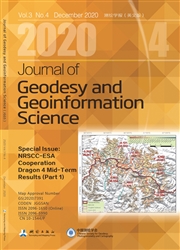Detecting Droughts in Southwest China from GPS Vertical Position Displacements
作者:Chaolong YAO,Zhicai LUO,Yueming HU,Changwei WANG,Rui ZHANG,Jinming LI
摘要:The solid Earth responds elastically to terrestrial water storage(TWS)changes.Here global positioning system(GPS)vertical position data at 31 stations from the crustal movement observation network of China(CMONOC)from August 2010 to December 2016 are used to detect droughts in Southwest China.Monthly GPS vertical position displacements respond negatively to precipitation changes and TWS changes observed by gravity recovery and climate experiments(GRACE)as well as river water level variations.GPS vertical position anomalies(the non-seasonal term)are well correlated negatively(correlations of about-0.70)with the commonly used meteorological composite index(CI)in China and the GRACE drought severity index(GRACE-DSI),but less correlated with the standardized precipitation evapotranspiration index(SPEI).Compared to CI,GPS vertical position anomalies have the advantage of detecting droughts caused by abrupt precipitation deficits in a short time.GRACE-DSI is less accurate in drought monitoring for some periods due to the missing data,while the severity of abrupt precipitation absent in some cases can be overestimated from SPEI with big variability.This study shows the reliability and advantages of GPS data in drought monitoring.
发文机构:College of Natural Resources and Environment MOE Key Laboratory of Fundamental Physical Quantities Measurement Key Laboratory of the Ministry of Land and Resources for Construction Land Transformation Guangdong Provincial Key Laboratory of Land Use and Consolidation Guangdong Province Land Information Engineering Technology Research Center
关键词:GPSverticaldisplacementterrestrialwaterstorageGRACEDROUGHT
分类号: P22[天文地球—大地测量学与测量工程]
- Near-zone Direct and Indirect Topographic Effects Based on the Rectangular Prism and Surface Element
- Satellite Positioning and Orbit Determination System(SPODS):Introduction and Evaluation
- Solar Radiation Pressure Modeling and Application of BDS Satellites
- Journal of Geodesy and Geoinformation Science Aims and Scopes
- Object Detection Research of SAR Image Using Improved Faster Region-Based Convolutional Neural Network
- Parameter Group Optimization by Combining CUBE with Surface Filtering and Its Application
- MHSS ARAIM Algorithm Combined with Gross Error Detection
- Automatic Matching of Multi-scale Road Networks under the Constraints of Smaller Scale Road Meshes
- Applicability of Bevis Formula at Different Height Levels and Global Weighted Mean Temperature Model Based on Near-earth Atmospheric Temperature
- Satellite Image Matching Method Based on Deep Convolutional Neural Network


